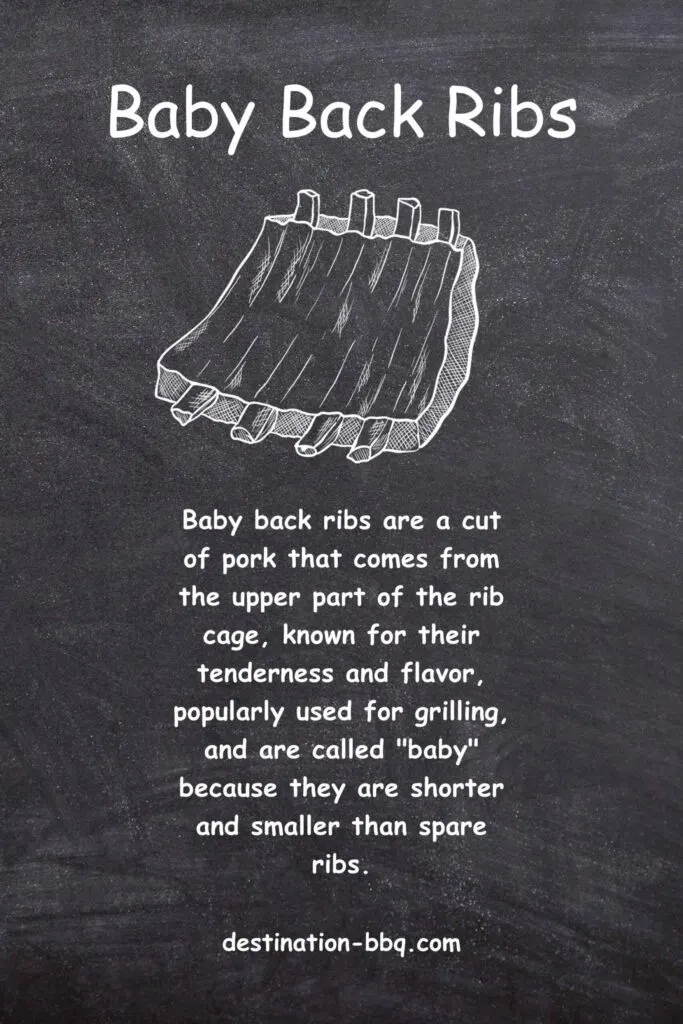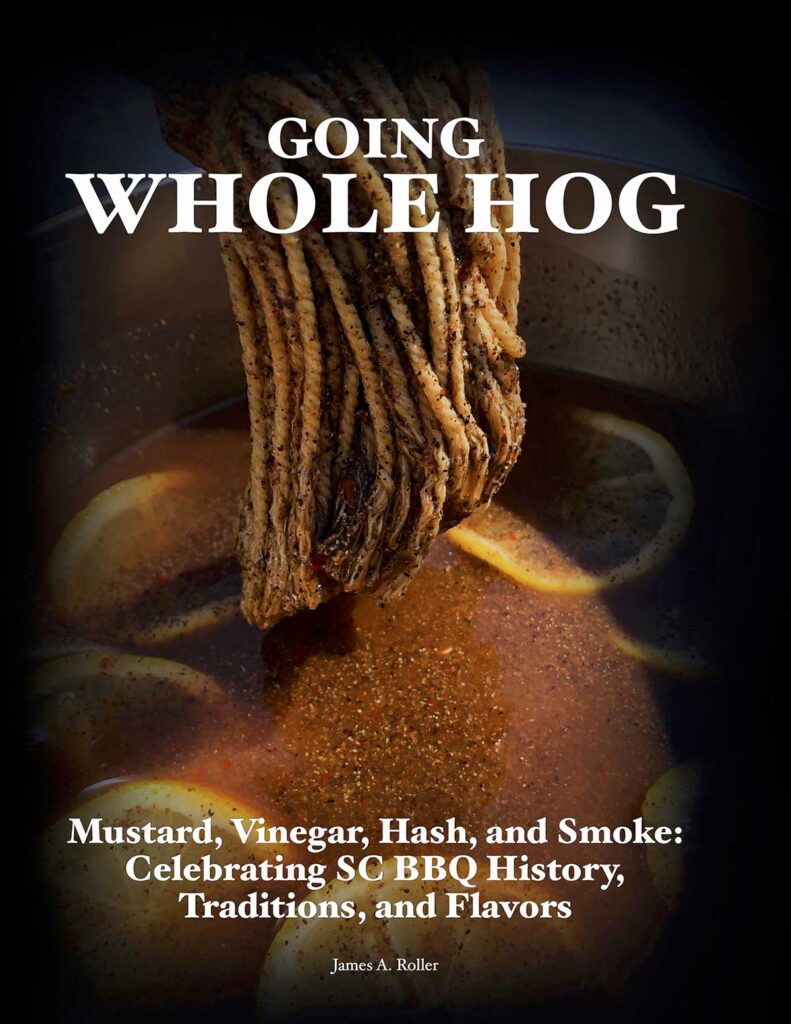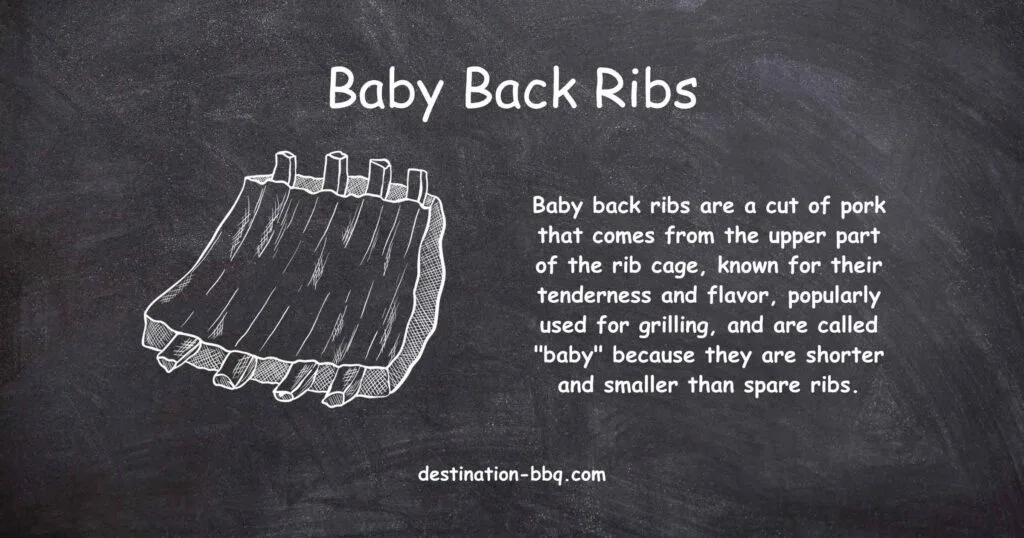
What are Baby Back Ribs?
Baby back ribs are a type of pork ribs that come from the upper back of a pig beneath the loin. They are leaner and have more meat than spare ribs, and are typically shorter and more curved. Baby backs are often seasoned with dry rubs or marinades, and can be cooked in a variety of ways, including grilling, smoking, baking, or braising, to create a tender and flavorful dish.
Key Takeaways
- Baby back ribs are a popular cut of pork, known for their tender and flavorful meat, and are a leaner option compared to spare ribs or St. Louis-style ribs.
- The name “baby” does not refer to the age of the pig, but rather to the size of the ribs compared to other cuts of pork ribs.
- Proper preparation and cooking techniques are essential to achieve tender, juicy ribs with a smoky flavor, whether grilling, smoking, baking, or braising. The “3-2-1” smoking method is a popular technique to achieve this result.
Understanding Baby Back Ribs
Imagine a succulent, tender, and flavorful dish that’s a staple in BBQ joints around the country – Baby Back Ribs. These ribs, hailing from the back of a pig, are a leaner, meatier option compared to their counterparts like spare ribs or St. Louis-style ribs.
Their superior quality is often reflected in their price. As famed Pitmaster Tuffy Stone says, “Baby back ribs are like the filet mignon of the barbecue world. They’re a little more expensive, but they’re a higher quality cut of meat and they’re really tender.”
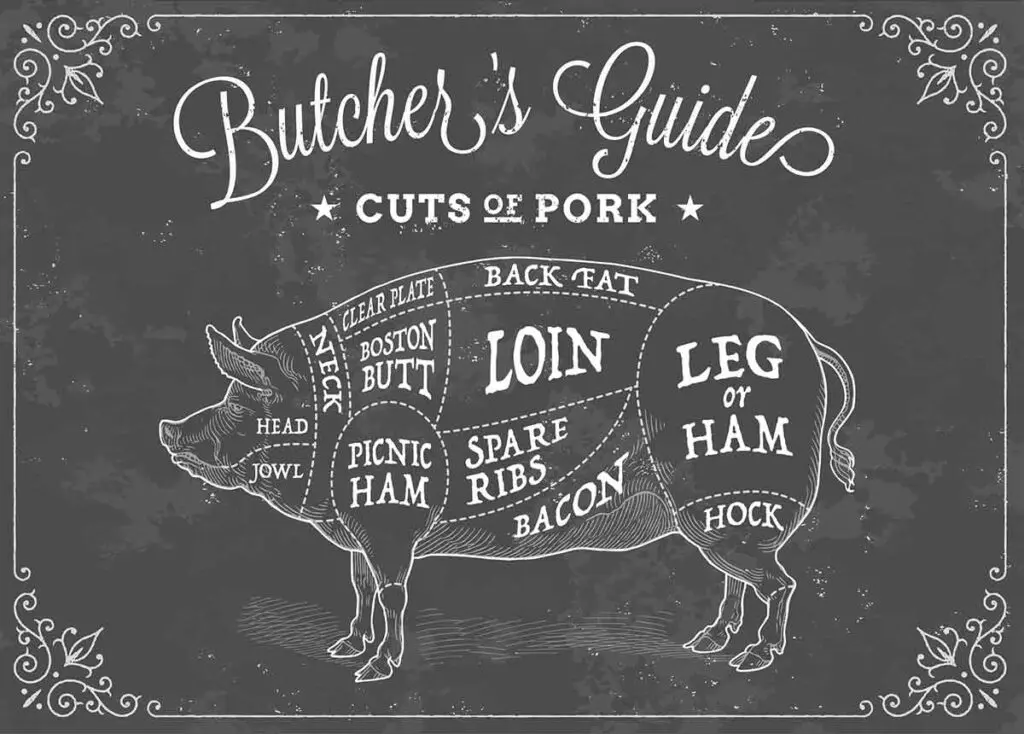
Anatomy
Baby backs are sourced from the area of the ribs connected to the backbone, nestled beneath the loin muscle. In the image above, you would find this cut of ribs under the loin area at the top of the spare ribs. Their distinct curve is due to how the ribs wrap around to meet the spine.
They have a shorter length compared to spare ribs. A typical rack weighs around 2 pounds, with nearly half of it being bone, and is usually enough to satiate one very hungry adult.
Pitmaster Myron Mixon puts it aptly: “Baby backs are just one of those things that are always gonna be popular. They’re smaller, easier to eat, and they’re leaner, so they’re healthier for you.”
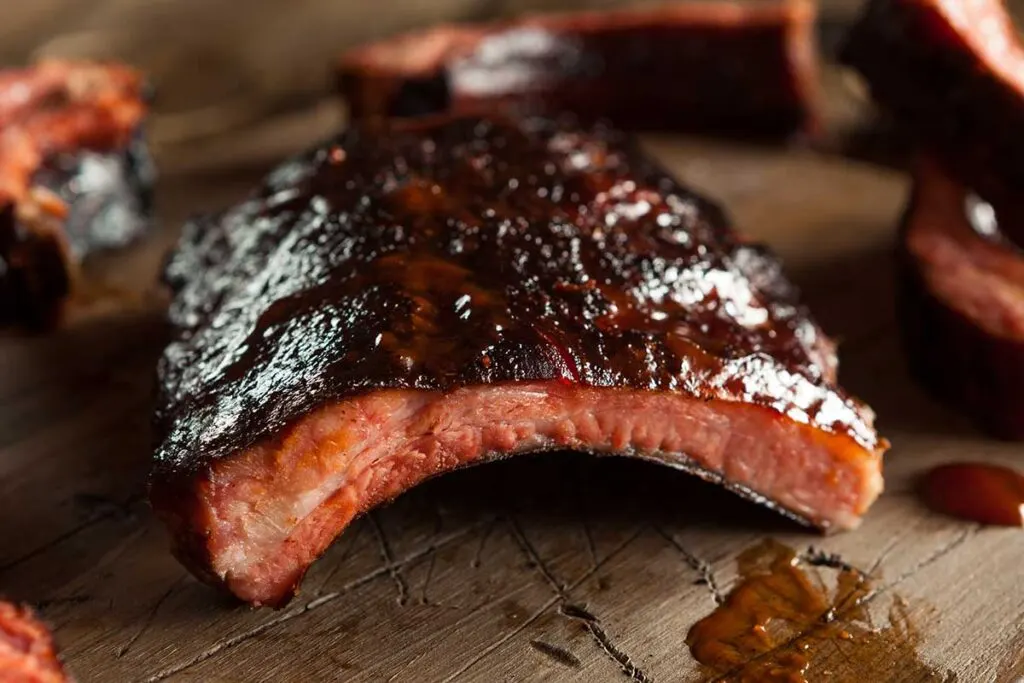
Where the Name Comes From
Baby backs are called that because they are shorter in length and lighter in weight compared to other types of pork ribs, such as spare ribs. The term “baby” does not refer to the age of the pig, but rather to the size of the ribs.
These ribs are taken from the top of the ribcage between the spine and the spare ribs, which is a smaller section of the ribcage, closer to the belly. They typically weigh between 1.25 to 1.75 pounds per rack and are 10-13 inches in length. Because they are smaller, they are often more tender and easier to handle than other types of ribs.
The name “baby back” is thought to have originated in the 1980s when the pork industry began marketing this type of rib as a more desirable alternative to spare ribs. The name caught on and has been widely used ever since.
How Baby Back Ribs Differ from Spareribs
Baby back ribs and spareribs differ in several ways, including:
- Size: Baby backs are shorter and smaller than spareribs. They come from the upper part of the ribcage and are located closer to the loin, while spareribs come from the lower part of the ribcage.
- Meatiness: Baby backs have less meat compared to spareribs, but they are more tender and leaner.
- Texture: Baby back ribs have a softer, more delicate texture than spareribs, which can be a little tougher and chewier.
- Flavor: Baby back ribs have a milder flavor compared to spareribs, which have a richer and more intense pork flavor.
When it comes to cooking, baby back ribs are usually grilled or baked, while spareribs are often slow-cooked, smoked, or braised. Spareribs take longer to cook than baby back ribs due to their larger size and higher fat content. James Beard Award-winning pitmaster Rodney Scott shares his excellent recipe for spareribs.
Both types of ribs can be delicious when cooked properly, and the choice between them usually comes down to personal preference.
Preparation
Here’s how to prepare your baby backs:
- Select high-quality meat from a reputable source
- Remove the silver skin on the underside of the ribs before cooking
- Apply a dry rub or marinade to add flavor to the ribs
- Cook the ribs using the “3-2-1” method for smoking
- Monitor the temperature and adjust cooking times as needed
- Add moisture to the ribs during cooking to keep them tender
- Experiment with different flavor combinations for unique and delicious dishes
- Store and reheat leftover ribs properly to maintain flavor and texture
- Avoid common mistakes like overcooking or underseasoning the meat
- Don’t be afraid to try new things and adjust recipes to your personal taste
Cooking
Whether you fancy grilling, smoking, baking, or braising, these ribs can be cooked in a variety of ways. The 3-2-1 method, a popular smoking technique, ensures a tender and flavorful result, with a tantalizing sweet and smoky taste.
Pitmaster Danielle Bennett suggests baby back ribs as a great entry point to barbecue: “Baby back ribs are my go-to when I’m introducing someone to barbecue. They’re easy to like, they’re not too spicy, and they’re a good entry point for people who might be a little hesitant about trying something new.”
